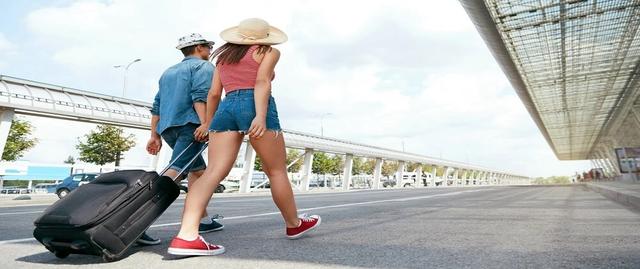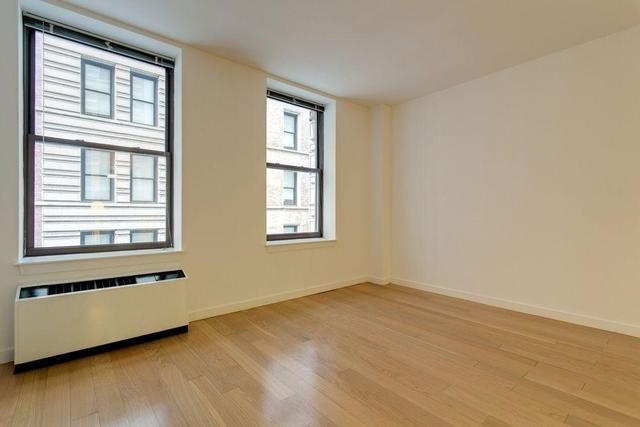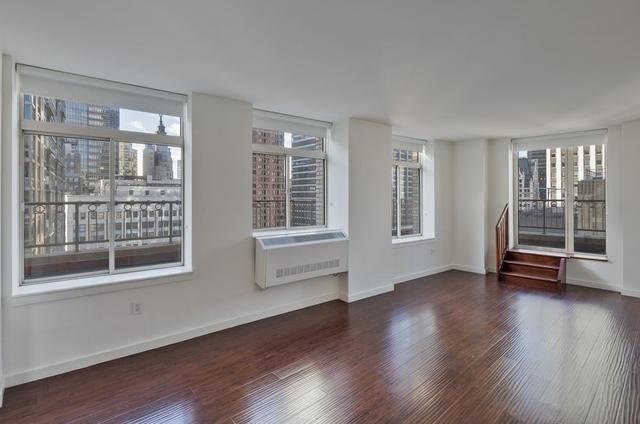
US Cities Where You Can Live Without a Car
By: ROS Team
The concept of car-free living is gaining popularity in modern society as more individuals recognize the benefits of lessening their dependency on personal vehicles.
Living without a car not only reduces traffic congestion and carbon emissions but also provides numerous benefits for individuals, such as saving money on car-related expenses, improving personal health through increased physical activity, and cultivating a sense of community in walkable neighborhoods.
Fortunately, numerous cities across the United States have made great advances toward building car-free settings.
These cities prioritize walkability, have robust public transportation systems, and promote bike-friendly infrastructure, allowing citizens to get around without owning a car.
In this blog post, we will look at some of the best cities in the United States where living without a car is not only possible but also very handy and rewarding.
Criteria for Car Free Living
To determine the viability of living without a car in a particular city, several key criteria need to be considered.
These criteria encompass the availability and convenience of alternative modes of transportation, the walkability of neighborhoods, and the presence of bike-friendly infrastructure.

Let’s explore these criteria in more detail:
1. Walkability
A car-free city should prioritize pedestrian-friendly infrastructure. This includes well-maintained sidewalks, clearly marked crosswalks, pedestrian signals at intersections, and safe walking routes.
Additionally, amenities and essential services such as grocery stores, schools, healthcare facilities, and recreational areas should be within reasonable walking distance from residential areas.
2. Public Transportation
A robust and reliable public transportation system is essential for car-free living. Cities should have a well-developed network of buses, trains, and subways that provide extensive coverage and frequent service.
Integration between different modes of public transportation is also crucial, allowing residents to easily transfer between lines and reach their destinations efficiently.
3. Bike-Friendly Environment
A city that supports car-free living should have a comprehensive bike-friendly infrastructure. This includes designated bike lanes and paths that are separated from vehicular traffic, bike racks and parking facilities, and bike-sharing programs that allow residents to rent bicycles conveniently.
Safety measures, such as traffic calming measures and cyclist awareness campaigns, are also important to ensure a secure environment for biking.
Top US Cities for Car Free Living

1. New York City, New York:
New York City stands out as a prime example of a city where living without a car is not only possible but often preferable. The city boasts an extensive subway system that covers all five boroughs, allowing residents to travel conveniently and efficiently.
Additionally, many neighborhoods in the city are highly walkable, with an abundance of shops, restaurants, and services within easy reach.
The city also prioritizes biking with designated bike lanes and a bike-sharing program, further enhancing the car-free experience.
2. San Francisco, California:
San Francisco is known for its efficient public transportation system, including the iconic cable cars, buses, and the Bay Area Rapid Transit (BART) system.
These transportation options make it easy to navigate the city without a car. The compact layout of the city also contributes to its walkability, with many neighborhoods offering a mix of amenities within walking distance.
Cyclists will appreciate the bike-friendly culture and infrastructure, including bike lanes and paths that provide scenic routes throughout the city.
3. Portland, Oregon:
Portland has gained recognition for its commitment to sustainable transportation and car-free living. The city boasts an extensive network of bike lanes, paths, and bike-friendly streets, making it a haven for cyclists.
In addition, the public transportation system, including the MAX light rail and buses, is well-developed and widely accessible. The city center is pedestrian-friendly, with numerous parks, shops, and restaurants within walking distance.
4. Boston, Massachusetts:
Boston offers a comprehensive public transportation system known as the Massachusetts Bay Transportation Authority (MBTA), which includes subway lines, buses, and commuter trains.
This system allows residents to travel easily throughout the city and its surrounding suburbs. The city’s historic neighborhoods, such as Beacon Hill and Back Bay, are highly walkable, featuring picturesque streets and a wealth of amenities.
Boston also provides bike-sharing programs and has made efforts to enhance bike infrastructure with dedicated lanes and paths.
5. Seattle, Washington:
Seattle has made significant investments in its public transportation system, including an extensive bus network and the Link Light Rail system, connecting downtown with surrounding neighborhoods.
The city’s compact layout and pedestrian-friendly streets make walking a convenient option for getting around.
Seattle also encourages cycling with bike lanes and paths, as well as a bike-sharing program. The city’s commitment to sustainability and green initiatives further supports car-free living.
6. Chicago, Illinois
Chicago is another city that offers excellent options for car-free living. It boasts exceptional walkability, particularly in neighborhoods like East Ukrainian Village, Near North Side, and West Loop, where residents have easy access to a variety of amenities on foot.
The city also provides a bike share program called Divvy, with strategically positioned bike share stations throughout key areas, allowing residents to conveniently rent and ride bicycles.
Chicago Transit Authority’s extensive bus and train network provides efficient and reliable public transportation options, ensuring that non-drivers can easily navigate the city.
7. Washington, D.C
Washington, D.C., as the nation’s capital, boasts an efficient and clean rapid transit system. The Washington Metropolitan Area Transit Authority (WMATA) operates the punctual Metro rail and Metrobuses, which offer excellent coverage throughout the city.
With six rail lines and more than 40 bus routes, residents have reliable public transportation options. The city is also served by Capital Bikeshare, a shared cycling network allowing residents to conveniently explore the city on two wheels.
Given the city’s bustling roads dominated by cabs and official caravans, many residents find that enjoying D.C. by rail, bus, bike, and foot is a superior experience compared to driving a personal car.
8. Denver, Colorado
Denver is a city that embraces car-free living with its well-developed public transit system. The Regional Transportation District (RTD) operates buses and a light rail system that efficiently connects various neighborhoods and districts, including a direct link from the Denver International Airport to downtown.
Additionally, the city offers B-cycle, a bike-sharing program with approximately 80 stations and 700 bikes, providing an eco-friendly and convenient option for short trips within the city.
9. Philadelphia, Pennsylvania
The last option on our list of cities where you don’t need a car in Philadelphia. The city offers excellent options for car-free living.
It ranks as the 5th most walkable city in the U.S., with neighborhoods like Center City West, Rittenhouse Square, and Avenue of the Arts South being highly walkable, featuring a mix of amenities within close proximity.
The city promotes biking with infrastructure such as bike paths and the Indego bike share program, providing residents with varied cycling experiences.
Public transportation is easily accessible through the Southeastern Pennsylvania Transportation Authority (SEPTA), which operates a vast network of buses, trains, and trolleys. Additionally, visitors can utilize the seasonal Philly Phlash to access local attractions conveniently.
Tips for Living Car Free

Choose a Walkable Neighborhood:
When searching for a place to live, prioritize neighborhoods with a high walkability score. Look for areas that have amenities like grocery stores, schools, parks, and shops within walking distance. This will make it easier to run errands and meet your daily needs without relying on a car. If you need help covering your termination charges, you can apply for a car title loan online and use your money for that expense!
Utilize Public Transportation:
Familiarize yourself with the public transportation options available in your city. Research bus routes, subway or light rail lines, and commuter trains that can take you to your desired destinations.
Plan your trips in advance and make use of apps or websites that provide real-time information on schedules and routes.
Embrace Cycling:
Invest in a bicycle and explore your city on two wheels. Many cities have dedicated bike lanes and paths that make cycling safer and more enjoyable. Consider joining a bike-sharing program if available in your area.
Cycling not only provides an eco-friendly mode of transportation but also promotes exercise and improves your overall health.
Use Ride-Sharing and Carpooling Services:
In situations where public transportation or cycling may not be feasible, consider using ride-sharing services or carpooling with friends, neighbors, or colleagues.
Sharing a ride not only reduces costs but also helps to minimize the number of cars on the road, contributing to a more sustainable environment.
Take Advantage of Delivery Services:
With the rise of online shopping and delivery services, it’s easier than ever to have groceries, meals, and other essentials delivered to your doorstep. This can help eliminate the need for frequent trips to the store and reduce reliance on a personal vehicle.
Plan Efficiently:
When running errands or attending appointments, plan your routes in advance to minimize travel time and distance.
Grouping tasks together in a single trip or taking advantage of public transportation hubs can help optimize your schedule and reduce unnecessary travel.
Prioritize Local Amenities:
Support local businesses and establishments in your community. By choosing local shops, restaurants, and services within walking or cycling distance, you can further reduce the need for car travel while contributing to the vibrancy of your neighborhood.
Stay Active and Stay Safe:
Living car-free often involves more physical activity, such as walking or cycling. Stay mindful of safety precautions, such as wearing reflective clothing or accessories, using bike lights, and following traffic rules when cycling or walking on the road.
FAQs
Is It Possible To Live In the U.S. Without A Car?
Yes, it is possible to live in the US without a car. Many cities offer extensive public transportation systems, walkable neighborhoods, and bike-friendly infrastructure, making it possible to get around without owning a car.
What City Is Easy To Get Around Without A Car?
New York City is known as one of the easiest cities to navigate without a car, owing to its huge public transportation system, walkability, and availability of other mobility options, such as bicycles.
Best Cities To Live Without A Car: Final Thoughts
In many U.S. cities, living without a car is a viable and practical choice. Cities such as New York City, San Francisco, Portland, Boston, Seattle, Philadelphia, and Denver provide citizens with the possibility to adopt a car-free lifestyle through well-developed public transportation systems, walkable neighborhoods, and bike-friendly infrastructure.
These cities demonstrate the possibility and benefits of living without a car in the United States by prioritizing alternate modes of transportation and establishing sustainable ecosystems.
Related Article:
Top Neighborhoods for Car Owners in NYC
Best Smart Cities in the US
Best Tech Cities in the US
Largest Cities in the US by Population








